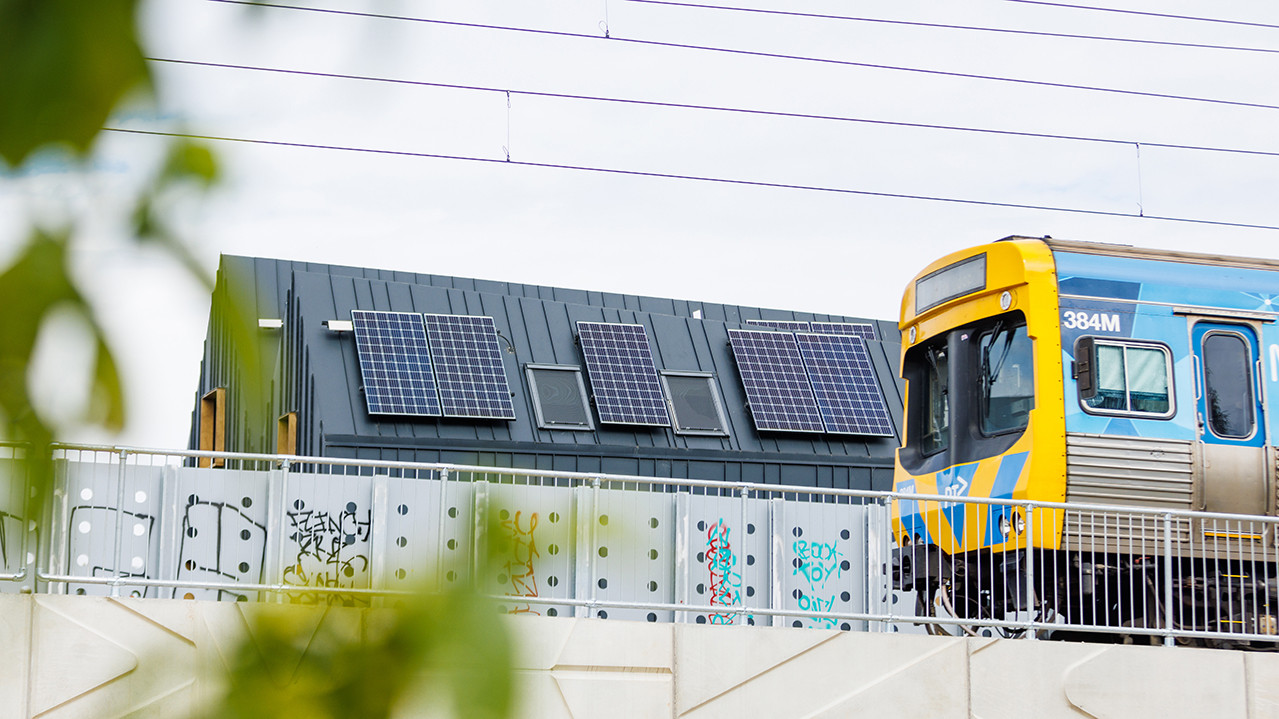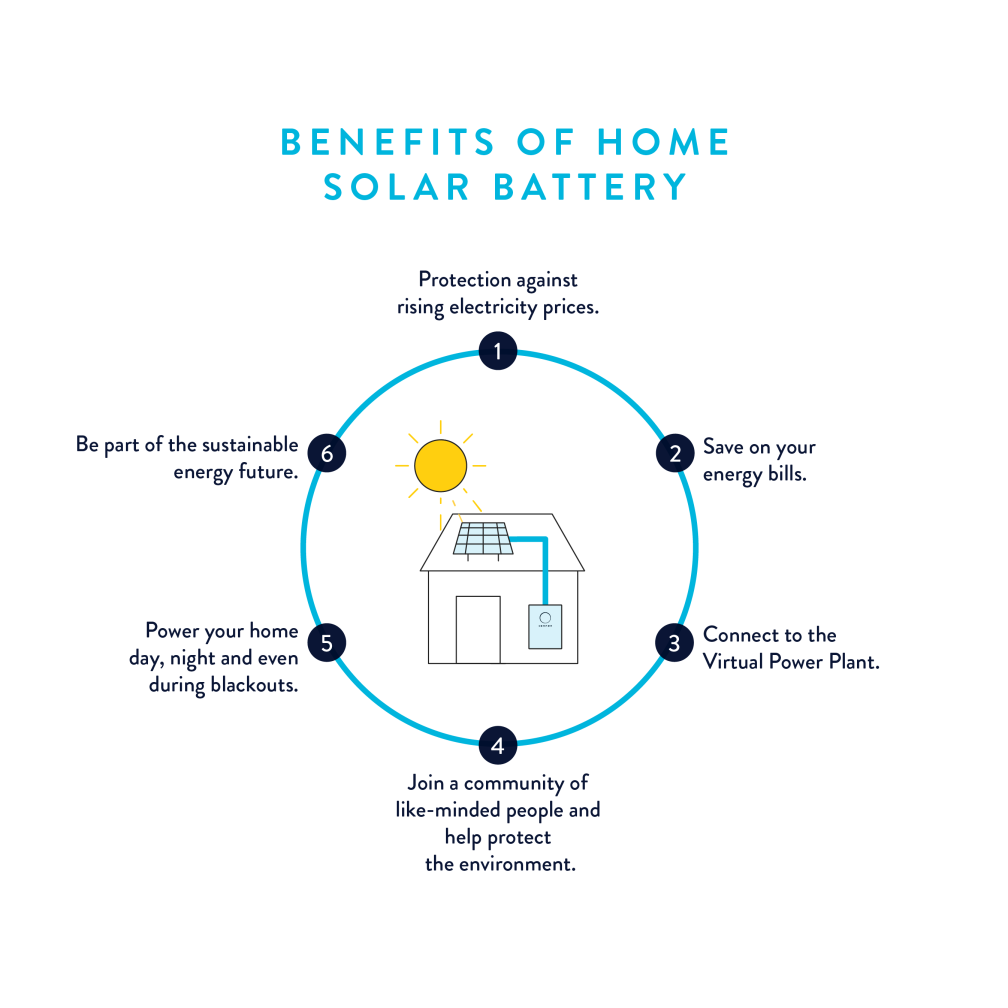
How much energy does a solar panel produce?
Australia is leading the world in its up-take of residential rooftop solar, installing new solar panels at ten times the global average rate¹ - and it's no surprise given the reduction of power bills, cleaner energy production and the energy independence that can be provided.
With energy prices continuously on the rise, now is the time to invest in solar. Installing a solar system not only offers long-term savings on electricity but also provides a more cost-effective and sustainable solution to lessen the impact of rising power costs.
How do they work?
Before installing solar, you should understand how panels work. At a basic level, panels convert sunlight into electricity through a process called photovoltaic (PV) conversion.
Solar panels consist of many individual solar cells which are made from semiconductor materials. When the sunlight hits these cells, the electrons within them are excited. These excited electrons then create an electric current. This creates direct current (DC) electricity within each of the solar cells.
Given that most household appliances use alternating current (AC) and not DC electricity, this power must be converted using an inverter. This makes the electricity usable within an average household, while any excess power can be fed back to the electrical grid.
How do solar batteries and solar panels work together?
The popularity of solar battery systems is on the rise in Australia - driven largely by technological innovations, improvements in device affordability and an increasing desire for energy independence. The integration of solar batteries into your existing solar system offers an extensive range of benefits, including:
- Energy Storage: Instead of sending excess energy during the day back to the grid, surplus energy is stored, ready to be used when the sun isn’t shining. This heavily reduces the reliance on the grid and can lead to significant savings in the cost of electricity.
- Energy Independence: As mentioned above, the reliance on traditional energy providers is reduced, with many batteries providing backup power should the power go out. By combining a solar battery with solar panels, you can use up to 75% of your self-generated energy to help lower your electricity bills.²
- Environmental Impact: Solar is a renewable resource, so by implementing a solar battery, it is possible to go completely off-grid and produce an entirely self-sustaining household.
- Reduce Grid Demand: Solar batteries can help stabilise the grid by using stored power during peak demand periods or outages.
- Energy Efficiency: By storing your energy and not sending excess power directly back to the grid, you can achieve higher self-consumption as opposed to solar panels alone and will reduce the need to export excess energy back to the grid.

What factors affect solar panel energy production?
Numerous environmental factors can have an impact on the energy produced. These factors can be either positive or negative in terms of energy production, and should all be considered when working out your energy production potential.
While solar panels alone still provide a lot of benefits, there are some limitations. The most obvious limitation is energy is only produced when the sun is in the sky, so energy isn’t produced at night time. Likewise, cloudy weather can have a more significant negative effect on solar power production - as the amount of sunlight reaching your panels is reduced.
Weather conditions, in particular cloud cover, may have a consequential effect on your solar panel’s energy production. While solar panels can still generate electricity with cloud cover, energy production is just far less efficient. This is because cloud formations can reduce the solar irradiance that reaches the panels, essentially limiting the amount of energy captured. As a general rule of thumb, on a cloudy day, a solar power system will produce around 25% to 45% of the energy it would normally produce under ideal conditions³.
Operating in direct sunlight is where you’ll see the strongest production efficiency, but it’s also important to consider the temperature. If the temperature increases too significantly, the solar cells can have impacted performance, leading to a reduction in the production of electricity. Ideally, your panels will operate in moderate temperatures and avoid the extremes.
Shading impacts solar panels in a similar way. If a panel is covered in shade, either entirely or partially, heat can accumulate and reduce the production efficiency. These areas of heat can also lead to long-term damage to the impacted cells. While this is commonly assumed to be from trees or other shadow-causing objects, even dust and debris can impact the efficiency of your solar panels.
Another consideration is the orientation of your home and how panels are installed. Generally, north-facing panels provide the most efficient energy production. It is worth noting that different orientations provide different efficiencies throughout the day. For example, west-facing panels produce less electricity in the morning but will produce more in the afternoon. Overall, Australia is a highly favourable country to utilise solar energy - receiving some of the highest levels of solar radiation in the world, making solar an ideal solution for homes.
What else do I need to consider for residential solar panels?
When exploring solar panel installation, it’s important to consider the number of panels that you may need. There are several factors to consider when it comes to this decision though and it will vary depending on your household. Energy consumption, available sunlight, energy goals, available roof space and your budget will all play into the decision of how many panels to install.
When it comes to solar installation, there are financial incentives available, depending on numerous factors. See what schemes are currently available by visiting the Home Battery Schemes page.
Solar feed-in tariffs are another aspect of solar that needs to be considered. Solar feed-in tariffs are programs that will compensate you for excess electricity produced and fed back to the grid. The core considerations for feed-in tariffs are the rates, contract duration and metering type. Metering types include net metering (i.e. only paid for excess power) and gross metering (i.e. paid for all solar generation).
Given that the installation of a solar system is an investment for the future, it is integral that high-quality products and installers are used. Solar panels coupled with a home battery storage solution are the answer to increasing your household’s energy independence. A sonnenBatterie includes a 10-year warranty on all its components or 10,000 cycles, whichever comes first. This allows you to have peace of mind that your investment is safe.
Is it worth installing solar panels without solar batteries?
Solar installation with a solar battery can still be worth it in terms of cost savings and environmental impact. However, to achieve the best efficiency and to maximise the benefits, a solar battery on top of a solar system will help provide the most possible benefits for your household.
Installing panels and a solar battery together can provide a considerably more cost-effective system long into the future. In addition to the obvious financial savings, the coupling of panels and batteries can provide you with more peace of mind, energy independence and consumption efficiency.
sonnenBatteries are an all-in-one energy storage solution. Because our solar batteries come with a hybrid inverter - you can connect your panels straight into the battery - saving you the cost of purchasing a separate solar inverter.
Why is it the right time to go solar?
The solar panel cost will depend on how big your installation is - typically reflecting how many kilowatts of panels you choose to install. While solar panel prices in Australia have dropped significantly over the last decade, there are also a number of Australian government-run solar rebate schemes for you to take advantage of.
Due to this, there has never been a better time to install solar. This also means that the sooner you install solar, the sooner you may start to see savings. “A commonly sized 6kW Solar PV System would cost between $4,000 and $6,000 in most states and a 10kW system would cost between $7,500 and $10,500”⁴.
Switching to a solar system with a solar battery can help you avoid any electricity price increases and bring you closer to achieving energy independence.
Explore The sonnen Product Range
Explore the sonnen range and contact a sonnen expert to find out how a sonnenBatterie can help your household reduce reliance on grid electricity and enjoy the benefits that energy independence delivers.
¹The University of Sydney, Australia faces solar waste crisis
²The level of self-consumption depends largely on the general conditions under which the sonnenBatterie is operated. In particular, the size of the PV system as well as the sizing of the sonnenBatterie directly affect the level of self-consumption. Please coordinate this with your sonnen partner.







